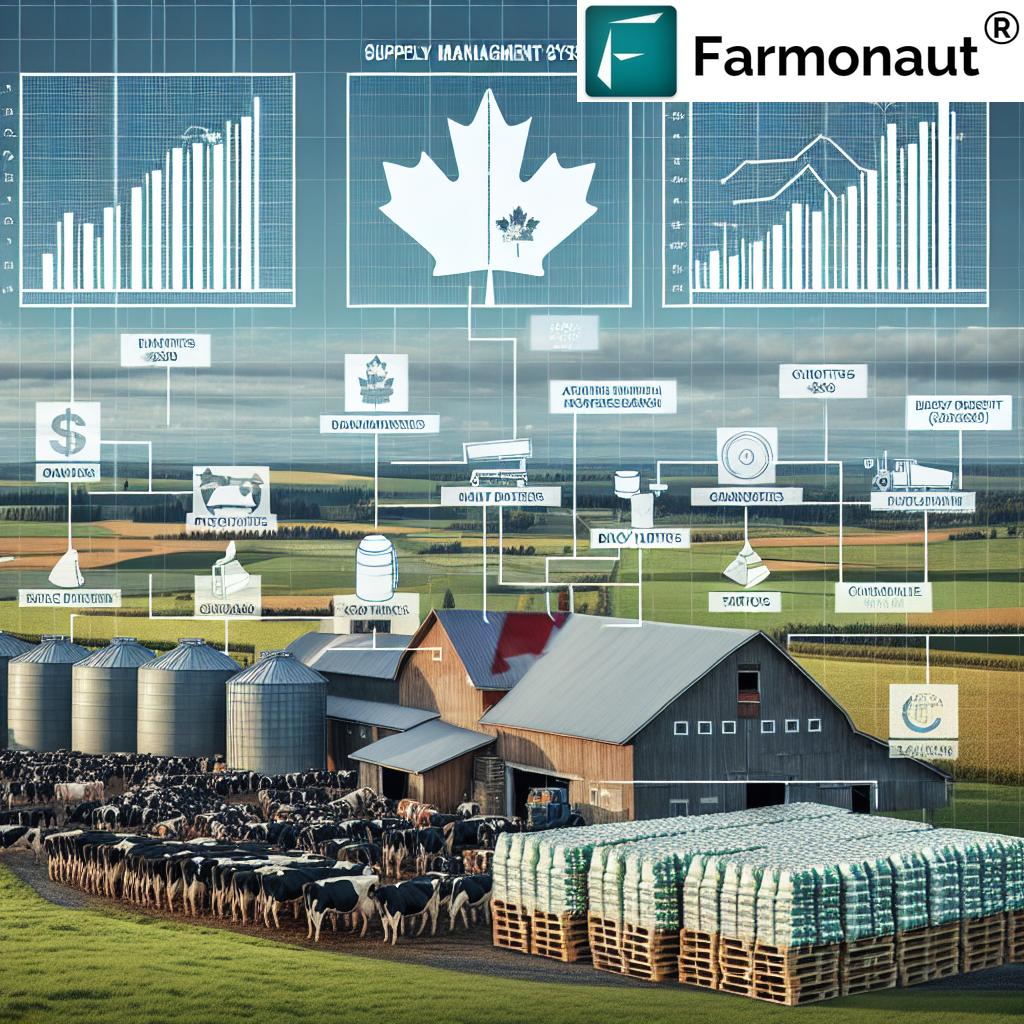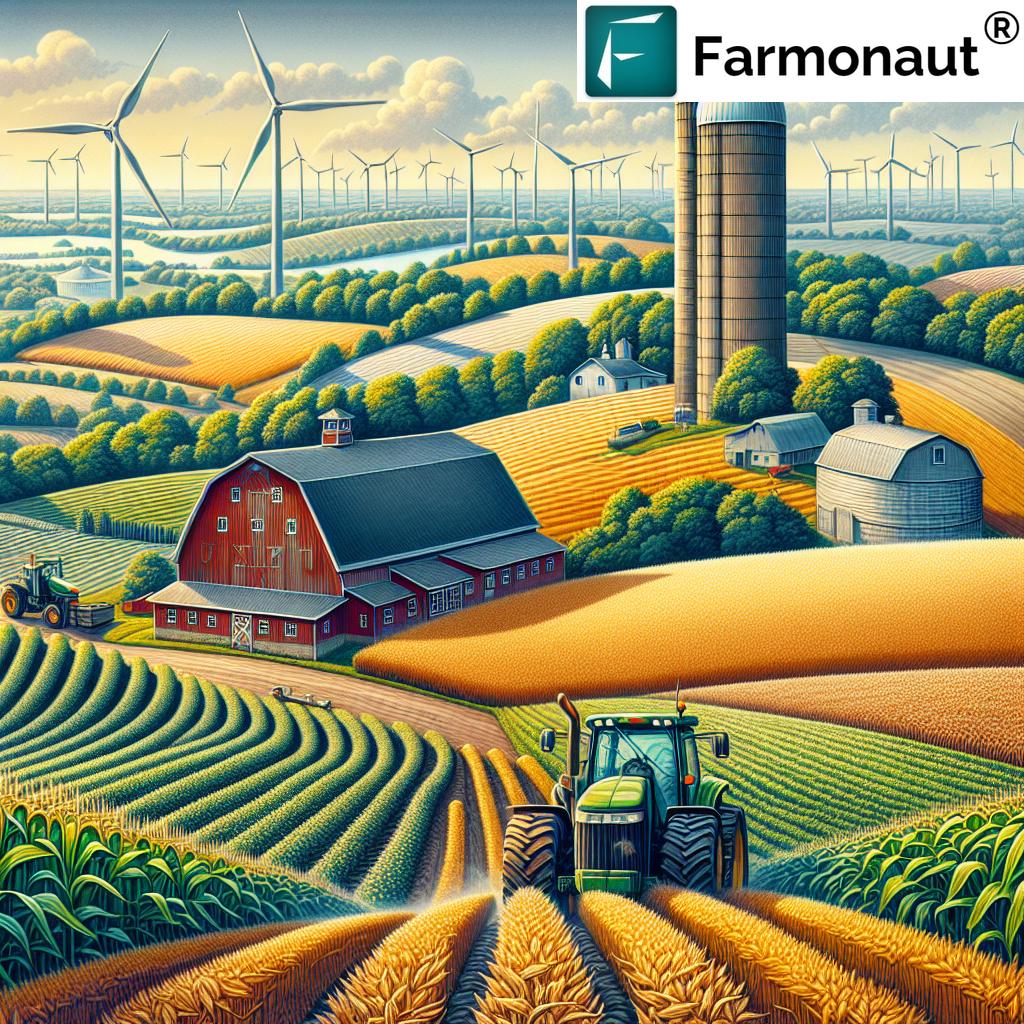Tariffs Canada Applied to Agricultural Products: 5 Impacts
“Canada’s supply management covers 8% of its farms, but controls over 90% of dairy, poultry, and egg production.”
Introduction: Canada’s Agricultural Tariffs Overview
The Canadian agricultural sector is a cornerstone of the national economy, encompassing a diverse range of products from grains and oilseeds to livestock and dairy goods. At the heart of this sector lie tariff policies and the distinctive Canada supply management system, which serve to balance the interests of domestic producers with international trade obligations. These mechanisms shape not only market stability and producer income but also influence consumers, foreign trade partners, and the dynamics of international negotiations concerning market access and import quotas canada agriculture.
In this comprehensive exploration, we examine five key impacts of tariffs Canada applied to agricultural products, drawing attention to how these agricultural trade policies in Canada affect price volatility, international trade agreements, sectoral development, and day-to-day realities for Canadian farmers and consumers.
Understanding Tariffs in Canada’s Agricultural Sector
Tariffs are taxes imposed on imported goods. In Canada, this trade instrument is deployed with a range of strategic purposes:
- Protecting domestic industries from foreign competition by raising the price of imported products.
- Generating government revenue through the collection of import duties.
- Influencing trade balances and diplomatic leverage in international negotiations.
The focus of Canadian agricultural tariffs is most evident in products sensitive to external shocks — especially dairy, poultry, and eggs, as well as sectors like livestock and grains. These tariffs are not arbitrary; they are calibrated based on policy objectives, market conditions, and prevailing international agreements.
For example, the dairy tariffs in Canada can be extremely high — up to 298.5% for certain products like butter, maintaining a tight protective shield for domestic production and market stability.

The Supply Management System: Ensuring Price Stability in Canadian Agriculture
One distinctive feature of agricultural policy in Canada is the supply management system, which covers the domestic dairy, poultry, and egg sectors. Originating in the early 1970s, this system was established as a mechanism to maintain market stability, shield producers from wild price fluctuations, and ensure adequate food supplies for consumers. Its design is underpinned by three fundamental pillars:
-
Production Quotas: Each domestic producer is allocated a specific quota — the maximum amount they can produce. This:
- Prevents overproduction, which could lead to a supply glut and falling prices.
- Ensures production levels match domestic demand.
-
Price Controls: Government agencies or producer boards set minimum prices for products, safeguarding:
- Producers’ incomes, by ensuring they receive fair compensation.
- Consumers, by shielding them from excessive price volatility.
-
Import Controls: Tariffs and import quotas limit the quantity of foreign agricultural products entering the Canadian market. Such import controls:
- Protect domestic industries from being undermined by subsidized or lower-cost imports.
- Maintain the integrity of market stability.
Trivia:
“Agricultural tariffs in Canada can reach up to 300% on certain dairy imports, impacting global trade negotiations.”
This system ensures producers are protected and that prices remain stable for critical domestic sectors. However, it’s also a major point of contention in trade negotiations and international relations.
Trade Agreements Affecting Canadian Agriculture: How Tariff Policies Evolve
Canada is active in international trade agreements, necessitating regular adjustments to its tariff structures and import controls:
- North American Free Trade Agreement (NAFTA): Enacted in 1994, NAFTA preserved the Canada supply management system by excluding the dairy sector from major restructuring.
- Comprehensive and Progressive Agreement for Trans-Pacific Partnership (CPTPP): Canada agreed to slightly expand foreign market access for trades of dairy and poultry, but maintained high tariffs for the majority of imports.
- United States-Mexico-Canada Agreement (USMCA, “New NAFTA”): Came into effect in 2020, requiring modest increases in import quotas canada agriculture (thus, lowering some tariffs) for U.S. dairy and poultry products, but leaving the fundamental system intact.
Trade agreements affecting Canadian agriculture often force policy adjustments to strike a balance between protecting domestic interests and fulfilling international obligations. Enhanced foreign market access can sometimes challenge supply management but can also foster export opportunities for other Canadian agricultural sectors.
Recent Trade Tensions and Retaliatory Measures Impacting Canada’s Agricultural Sector
In recent years, trade relations have experienced increased tensions, particularly involving the United States and China — the two most significant international trade partners for Canadian agricultural products:
- United States Tariffs: The imposition of U.S. tariffs on Canadian steel and aluminum (used in agricultural machinery and equipment) has raised production costs for farmers. Additionally, the U.S. has challenged Canada’s dairy supply management system at the World Trade Organization and as part of USMCA reviews.
- Retaliatory Measures and Dairy Disputes: In 2025, the U.S. threatened further tariffs and even challenged Canada’s quota practices in the dairy sector, promoting retaliatory threats and fueling uncertainty in agricultural trade dynamics.
- China-Canada Agricultural Disputes: In March 2025, China imposed 100% tariffs on Canadian rapeseed meal and oil imports, triggering price spikes and creating concern about access to this large export market.
These trade disputes and retaliatory measures underscore the vulnerability of Canadian agriculture to external geopolitical events, and highlight the importance of stable trade policies.

Tariffs Canada Applied to Agricultural Products: 5 Key Impacts
Let’s break down the five primary impacts of tariffs in Canadian agriculture, focusing on market stability, trade agreement outcomes, price volatility, producer income, and consumer pricing:
1. Market Stability: The Cornerstone of Canadian Agricultural Policy
The primary intent behind most Canadian agricultural tariffs is to maintain market stability. By
- Limiting low-priced foreign imports via tariffs and import quotas canada agriculture
- Matching domestic supply to anticipated demand through quotas and supply management controls
The domestic market is insulated from intense and volatile global price shifts. This method is particularly vital in dairy, poultry, and egg sectors, where
- Poor harvests, disease outbreaks, or global disruptions could otherwise devastate producer incomes
Thus, the Canada supply management system acts as a shock absorber for the sector as a whole.
2. Trade Agreement Outcomes: Negotiating Market Access and Concessions
Canada’s agricultural import controls — whether high tariffs or managed quotas — are frequently targeted in trade negotiations. As seen with USMCA and CPTPP:
- Market access for foreign producers is gained at the price of small but meaningful increases in import quotas or reductions in tariffs among sensitive products.
- In turn, Canada often garners improved export terms for other agricultural sectors, from grains and oilseeds to beef.
However, each agreement subjects domestic market stability to new challenges and competitive pressures. Recent disputes also highlight how easily the model can become a diplomatic flashpoint.
3. Price Volatility: Dampening Swings, Driving Predictability
The supply management system and associated tariffs aim to dampen price swings for both producers and consumers:
- Strong price controls establish forecastable farm income and retail pricing.
- By keeping imports in check, these controls minimize the impact of global gluts or shortages.
- However, they can occasionally generate price premiums for Canadian goods compared to international prices, especially during periods of high world supply.
The effect: increased predictability and reduced risk exposure for all market participants.
4. Producer Income: Secured or Squeezed?
Stable market structures allow producers in protected sectors (especially dairy, poultry, and eggs) to
- Plan for investments and long-term growth due to consistent prices and demand
- Retain higher average incomes per unit than many competitors subject to global price shocks
Yet, in other sectors (such as oilseeds, grains, livestock) more exposed to world markets, trade tensions and retaliatory tariffs can erode profitability significantly — as witnessed in the 2025 China tariffs episode.
5. Consumer Pricing: Costs and Choices
- For staple goods under supply management, Canadian consumers typically pay premium prices compared to some international markets (notably in dairy products).
- However, the trade-off is the predictability of supply and quality, as seen in the minimal price fluctuation for milk in Canada versus the U.S. or Europe.
- Periods of foreign retaliatory measures can temporarily constrain availability and spike prices for certain globally-traded products.
The impact of tariffs thus extends into the shopping cart, touching every Canadian household.
Impact Summary Table: Tariffs and Canadian Agriculture
| Key Impact | Description | Estimated Change (%) | Relevant Sector/Product |
|---|---|---|---|
| Market Stability | Reduced price and supply volatility through quotas and tariffs | -60% volatility | Dairy, Poultry, Eggs |
| Trade Agreement Outcomes | Changes in market access due to negotiated tariff/quota adjustments | +5% access (structured increases) | Dairy, Poultry, Beef, Grains |
| Price Volatility | Stable consumer pricing for supply-managed products, spikes for others during disputes | -50% fluctuation (protected); +25% (exposed) | Dairy, Livestock, Oilseeds |
| Producer Income | Higher, predictable earnings in protected sectors; exposed sectors at risk | +20% (protected); -10% (exposed during disputes) | Dairy, Oilseeds, Rapeseed |
| Consumer Pricing | Typical premiums on supply-managed goods; temporary spikes on others | +15% over global average (dairy), +20% (dispute-related) | Dairy, Rapeseed Oil, Eggs |
Farmonaut: Empowering Precision Agriculture in Canada Amid Tariff Dynamics
As tariff and trade agreement landscapes shift, Canadian farmers face increased complexity in managing supply, costs, and profitability. At Farmonaut, we recognize that
- Optimizing crop production and resource management
- Staying resilient amidst volatile agricultural trade policies in Canada
- Adopting sustainable and transparent farm practices
are more important than ever.
Our platform offers a suite of advanced technologies designed for the modern grower, agribusiness, and government sector, including:
- Satellite-Based Crop Health Monitoring: Receive regular, actionable insights on vegetation health, soil moisture, and crop stress — all from your mobile or desktop device.
- AI-Powered Advisory: Benefit from real-time, field-specific recommendations with the Jeevn AI farm advisory system.
- Blockchain Traceability: Trace your supply chain from seed to supermarket shelf, enhancing confidence in Canadian goods.
Learn more at our Product Traceability page. - Fleet and Resource Management: Cut fleet expenses and maximize efficiency with our logistics and farm equipment tracking solution.
Discover more at Farmonaut Fleet Management. - Carbon Footprinting: Document, monitor, and reduce your environmental impact — essential amid changing policy landscapes and evolving consumer expectations.
Get started by exploring our Carbon Footprinting Service. - Large Scale Farm Administration: Unlock comprehensive, easy-to-use farm management tools for government or enterprise needs. Visit our Large Scale Farm Management page.
Farmonaut is committed to making precision agriculture accessible, affordable, and scalable from the individual farmer to provincial agencies. Our core mission is to ensure that regardless of evolving tariff structures or global market shocks, Canadian producers and agribusinesses remain competitive, profitable, and future-ready.
Developers and agricultural tech companies can leverage our real-time API for customized data integration, or review detailed API documentation to build their own agri-tech solutions.
For insurance agencies and banks focused on crop loans and insurance verification, our Crop Loan & Insurance Verification streamlines compensation, approval, and risk management processes.
FAQs: Tariffs and Canada’s Agricultural Sector
What are tariffs, and how do they impact Canadian agriculture?
Tariffs are taxes applied to imported goods. In Canada, they support domestic producers by making imported agricultural products more expensive, thus driving demand for locally produced goods. This practice helps maintain market stability and shields the sector from abrupt market shocks, but it also can lead to slightly higher consumer prices in protected sectors.
How does the supply management system work for Canadian dairy and poultry?
The Canada supply management system uses production quotas, price controls, and import management (mainly tariffs and quotas) to balance supply with domestic demand. It ensures stable prices for producers, guards against overproduction, and limits foreign imports through high tariffs.
How do international trade agreements affect agricultural tariffs in Canada?
Trade agreements affecting Canadian agriculture — such as NAFTA/USMCA and CPTPP — often lead to adjustments in tariffs and import quotas. These changes strive to broaden market access for trading partners while balancing protection of domestic industries.
What are the main challenges for Canadian farmers in a changing tariff environment?
Uncertainties from evolving tariff policies, trade disputes, and retaliatory measures make it critical for Canadian farmers to adopt resilient, data-driven approaches. Modern management tools — such as Farmonaut’s satellite-based monitoring and AI advisory — help optimize resources and production decisions against this complex backdrop.
Do tariffs benefit or harm Canadian consumers?
Tariffs benefit consumers by ensuring stable supply and supporting local industry, minimizing disruption and volatility in crucial products. However, some goods (notably dairy) may carry premiums compared to international rates, and trade disputes may lead to temporary availability or price stresses in globally-traded items.
How can Canadian farms and agribusiness adapt to changes in tariff and trade policy?
By leveraging real-time technology, advanced analytics, and automated record-keeping, farms can respond efficiently to shifts in tariff structures. Farmonaut’s end-to-end management suite provides the monitoring and traceability needed to maintain profitability and compliance even during times of regulatory flux.
Conclusion: Tariffs, Supply Management, and the Future of Canadian Agriculture
Canada’s agricultural tariff policies are the result of decades of carefully crafted domestic and international considerations. The combination of supply management, high tariffs, and evolving trade agreements has allowed Canadian agriculture to enjoy unparalleled market stability — particularly in dairy, poultry, and eggs. Yet, this system strains under the pressures of global market shifts, diplomatic disputes, and consumer demands for affordability.
The five core impacts of these tariff structures ripple throughout Canada’s economy: from protecting producer income and dampening price volatility to influencing international relations and everyday consumer costs. In a world of changing climate and high-stakes geopolitics, tools that ensure flexible, transparent, and data-driven farm management (such as those provided by Farmonaut) are indispensable for the sector’s resilience.
As agricultural trade policies in Canada continue to adapt, the relationship between tariffs, market stability, and global competitiveness will remain at the forefront of policy debate and on-farm decision-making.
Empower your farm and future-proof your operations — learn more and start with Farmonaut’s satellite, AI, and blockchain-powered solutions for Canadian agriculture today.
















